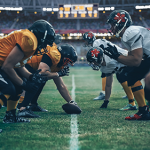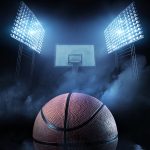Spring is here! Opening Day is Thursday April 7. For the first time in three years, baseball stadiums will fill to capacity throughout the country as folks flock back to America’s favorite pastime. (Due to Covid-19, in 2020 there were no live spectators until the final two rounds of the post-season. In April of 2021, Yankee Stadium opened at 20% capacity. Not until mid-July last summer did all 30 MLB stadiums re-open to full-capacity crowds). As the players take the field, the smell of hotdogs and popcorn permeates the air, and the beer begins to flow, the stadium environment presents a cornucopia of potential premises liability cases. Mobile food and beverage vendors can spill their goods. Oil and other slippery substances can leak from the equipment at the concession stands. Bathrooms can be a minefield of wet surfaces
https://www.sburkelaw.com/library/slip-and-fall-at-a-stadium-or-arena.cfm.
The average stadium seating capacity is nearly 43,000. Considering the condensed space and all the milling about before, during and after the game as fans find their seats, go in search of refreshments and restrooms, and exit en masse when the game is over, it’s not surprising that stairwell and slip-and-fall accidents are among the more frequent culprits in premise liability lawsuits brought against stadium property owners.
Say a spectator falls down some stairs upon attempting to exit the park and decides to sue. When a stadium owner or management company hires an accident reconstruction firm like CED, forensic engineers will inspect the scene and begin a thorough investigation. Their analysis may include:
- Evaluating how the stairwells were constructed, and which parts, if any, do not meet code. Height, width, depth of risers on each step, and handrail distance to stair nosing are required to be within a close tolerance to minimize tripping.
- Measuring the slip resistance of the walking surface to determine if the surface meets the minimum threshold to be considered slip resistant.
- Analyzing the lighting component in determining the legitimacy of a premise liability claim. During an inspection, engineers pay very close attention to time of day, the lighting intensity and any shadows that may have created pockets of darkness. Sunrise and sunset are considered to determine if natural light was a factor in the incident.
- Considering the possible presence of obstacles on the floors, like trash, spills, or signage.
- Evaluating the extent to which human factors influenced the incident. For example, perhaps the person who slipped did not bother to hold onto the railing, which could have prevented the accident altogether. Perhaps the person was distracted and missed a step.
It is often said that “Baseball is a game of inches.” One might say the same about the process our engineers follow in reconstructing an accident such as the stadium stairwell scenario described above. Both player and expert go through extensive training to hone their craft by being thorough, methodical, timely and accurate. The tools can make a difference. State-of-the-art bats, gloves, uniforms and helmets enable our favorite teams to perform to the best of their ability at the highest levels. Likewise, CED engineers use the best practices at their disposal in piecing together the most precise conditions and the most accurate sequence of events – “to the inch” – when charged with determining what factors caused, or did not cause, an accident.





